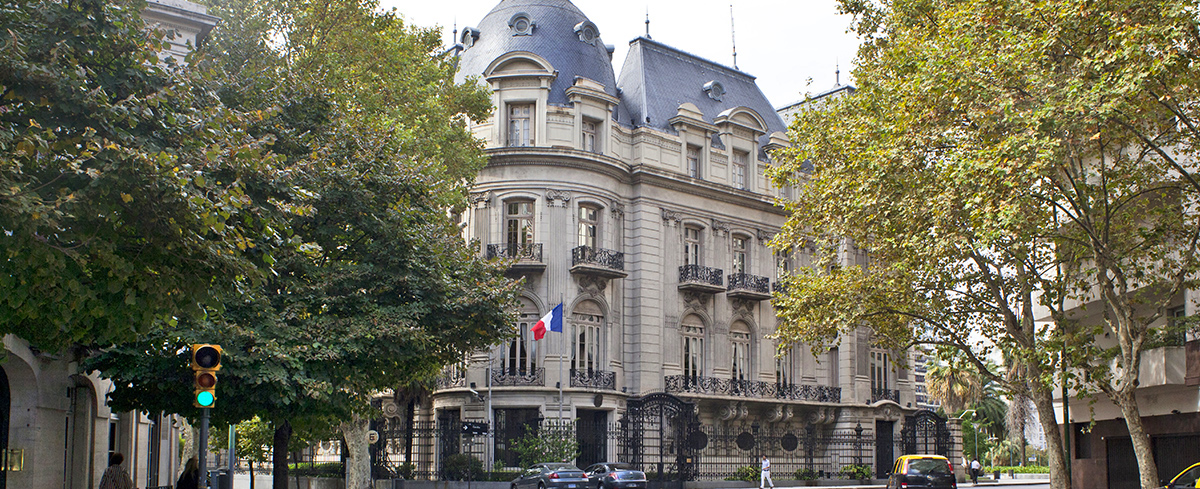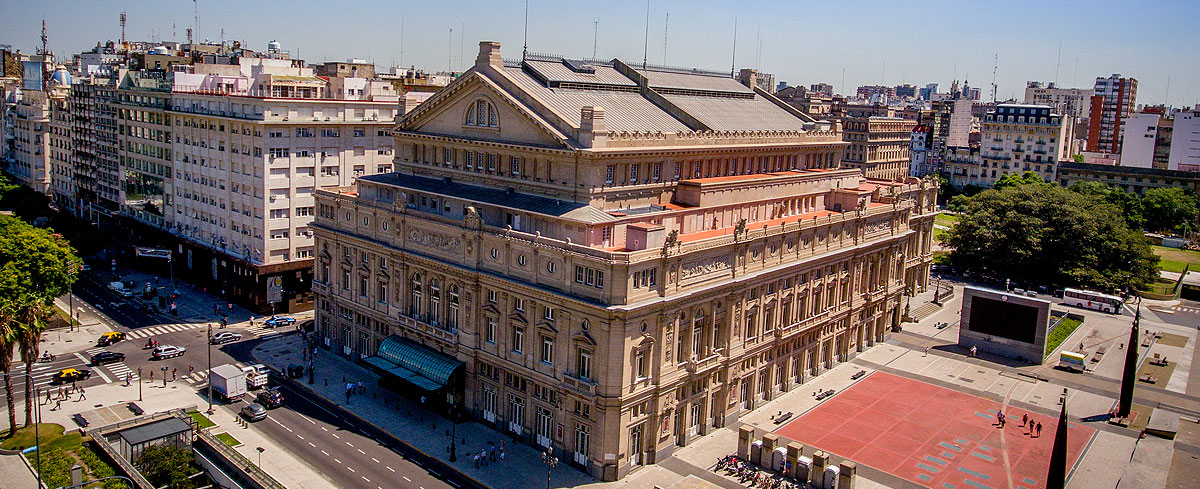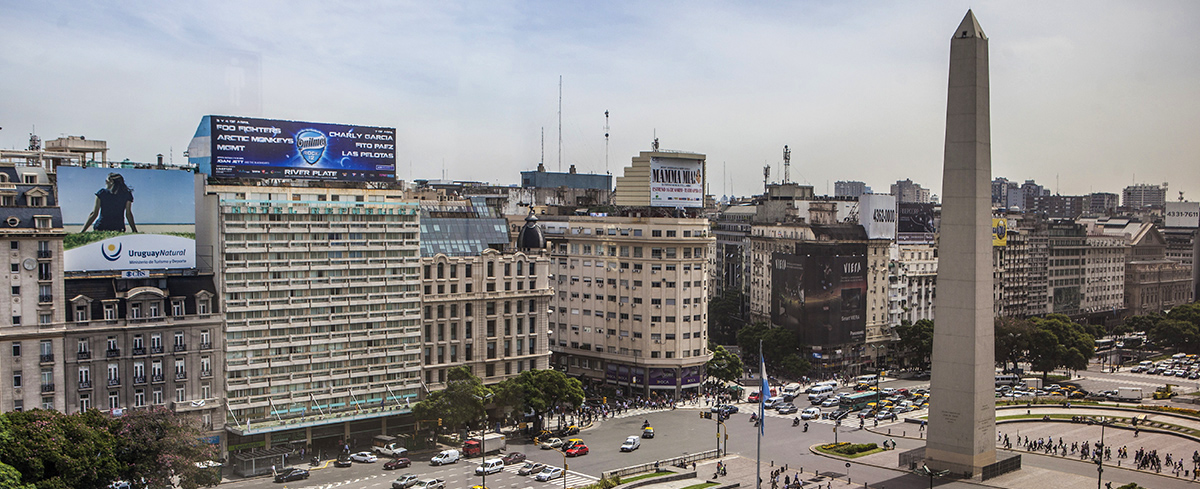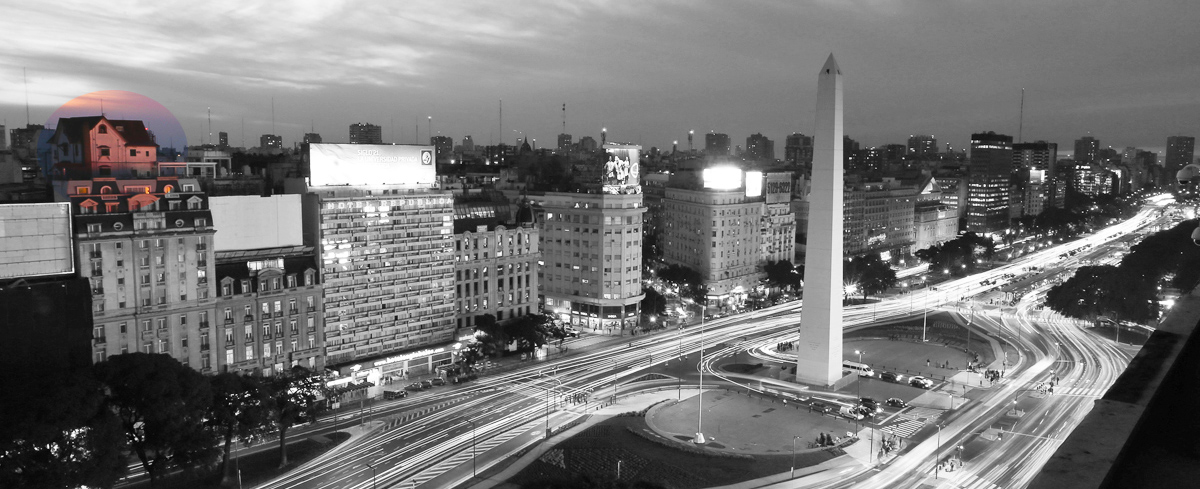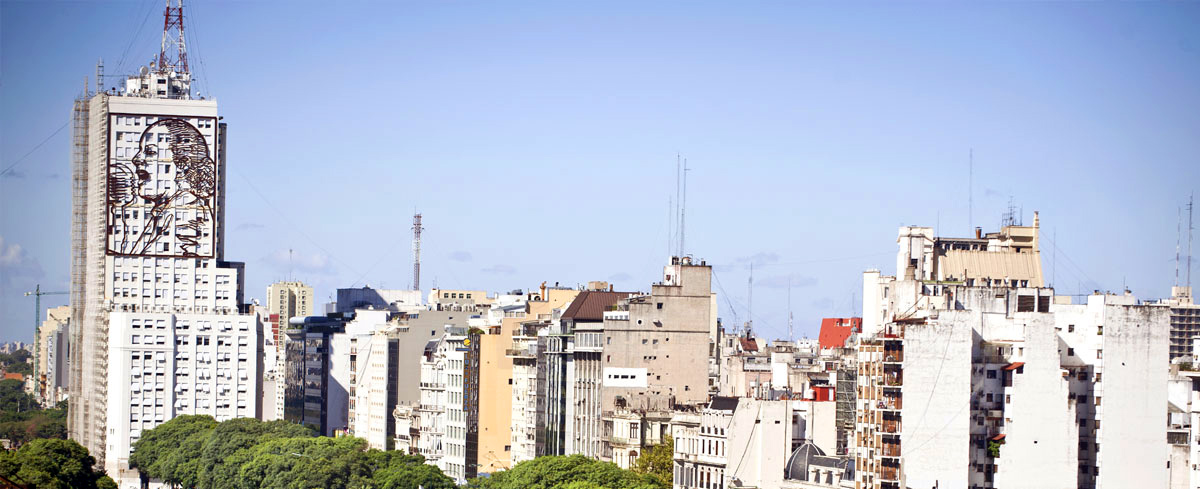Crossing the city from Retiro in the north to Constitución in the south, Avenida 9 de Julio, named to mark Argentina’s independence day, is the city’s widest street, and one of the widest in the world, spanning up to 14 lanes of traffic in parts. Along its 3 km, there are several major attractions, and many smaller curiosities to spot. Here are just some of the highlights, heading north to south.
1. The majestic embassy
At the northern end of 9 de Julio is the former Palácio Ortiz Basualdo, magnificent Beaux Arts building which since 1939 has housed the French Embassy in Buenos Aires. The building was designed in 1912 for Daniel Ortiz Basualdo and served as the official residence of the Prince of Wales on his visit to Argentina in 1925. Part of the building was threatened with demolition in the 1970s as a result of the work on constructing 9 de Julio, but thanks to the French government’s refusal to sell the property, the course of the road was slightly altered to allow it to be saved, and to become one of the avenue’s most impressive landmarks.
2. The stunning Teatro Colón
Slightly further north from the obelisk is one of the world’s greatest opera houses, the grand Teatro Colón. Acclaimed for its acoustics and spectacular architecture, this theatre has hosted many international ballet and opera legends and is a must-see for any visitor.
3. The iconic obelisk
The obelisk is one of Buenos Aires’ most famous landmarks marking the key junction of 9 de Julio with Avenida Corrientes, where you’ll find the city’s theatre district. The 67.5m beacon took just 31 days to build and has become a meeting point for celebrating sporting victories as well as for making political demonstrations.
4. The chalet on the skyline
Look up and scan the skyline when you’re at the obelisk and you might find a surprising piece of eccentric architecture. On top of a 9-floor building flanking this busy thoroughfare, there’s a quaint chalet that looks very out of place indeed. It was built by a Spanish furniture trader based on the style of the houses in the coastal city of Mar del Plata. His use for the quirky property? Simply to sleep the siesta!
5. The Japanese crane
The monument at the intersection with Marcelo T. de Alvear is the work of Japanese-Argentine sculptor Julio Eduardo Goya, and a homage to Argentina’s Japanese community. The piece depicts the national bird of Japan, the crane. Installed in 1998, it had to be moved from its original location to make way for the 9 de Julio Metrobus lane.
6. One of the seven wonders
No time to get fo the Iguazu Falls in the northwest of the country? You can at least stop by this monument to one of the seven natural wonders of the world. The miniature 280m version of the enormous chain of waterfalls is located at the intersection with Av. de Mayo and attempts to recreate the sensation of being surrounded by the falls’ incredible torrents of water.
7. Don Quixote tilts at the tower blocks
On the other side of the road, Miguel de Cervantes’ famous knight gallant can be found tilting not at windmills but at the cars rushing by. The sculpture was made by Aurelio Teneo and is heavy in symbolism - it was given to the city as a present from Spain on the fourth centenary of the founding of Buenos Aires.
8. The dismembered fountain
Also nearby is what remains of a magnificent fountain that was once located behind the Casa Rosada. The original fountain was dismantled in 1920 and its parts were dispersed throughout the city. What remains here at the junction of 9 de Julio and Avenida de Mayo is only the upper part of the original fountain.
9. Evita speaks every day
Heading south on the avenue, you can’t miss the huge portrait of Eva Duarte Perón in steel on the wall of the tallest building on the avenue, which belongs to the Ministry of Public Works. It’s one of two such images of the former first lady installed on either side of the building, facing north and south along 9 de Julio, in 2011. The image facing north is taken from a picture of Evita giving a speech in this very building, while the image on the south-facing side of the building is taken from the photograph used on the cover of her 1951 autobiography La Razon de mi Vida (The Reason for my Life).
Of course, the attractions and curiosities don’t stop here. Being one of the widest Avenues in the world, 9 de Julio offers plenty of other surprises. Take a stroll and see what else you can find, then explore the city’s other emblematic neighbourhoods.
